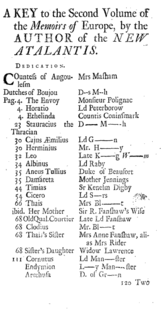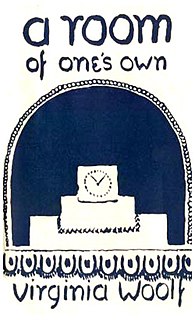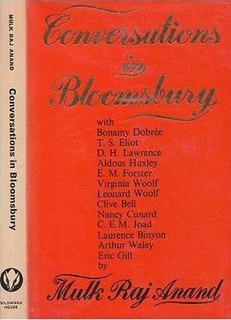Related Research Articles

An autobiography is a self-written account of the life of oneself. The word "autobiography" was first used deprecatingly by William Taylor in 1797 in the English periodical The Monthly Review, when he suggested the word as a hybrid, but condemned it as "pedantic". However, its next recorded use was in its present sense, by Robert Southey in 1809. Despite only being named early in the nineteenth century, first-person autobiographical writing originates in antiquity. Roy Pascal differentiates autobiography from the periodic self-reflective mode of journal or diary writing by noting that "[autobiography] is a review of a life from a particular moment in time, while the diary, however reflective it may be, moves through a series of moments in time". Autobiography thus takes stock of the autobiographer's life from the moment of composition. While biographers generally rely on a wide variety of documents and viewpoints, autobiography may be based entirely on the writer's memory. The memoir form is closely associated with autobiography but it tends, as Pascal claims, to focus less on the self and more on others during the autobiographer's review of his or her life.
The following outline is provided as an overview of and topical guide to literature:
Nonfiction or non-fiction is any document or content that purports in good faith to represent truth and accuracy regarding information, events, or people. Nonfiction content may be presented either objectively or subjectively, and may sometimes take the form of a story. Nonfiction is one of the fundamental divisions of narrative writing— in contrast to fiction, which offers information, events, or characters expected to be partly or largely imaginary, or else leaves open if and how the work refers to reality.
Slash fiction is a genre of fan fiction that focuses on romantic or sexual relationships between fictional characters of the same sex. While the term "slash" originally only referred to stories where male characters were involved in an explicit sexual relationship as a primary plot element, it is now used to refer to any fan story containing a pairing between same-sex characters. Many fans distinguish female-focused slash as a separate genre, commonly referred to as femslash.
In literary criticism, stream of consciousness is a narrative mode or method that attempts "to depict the multitudinous thoughts and feelings which pass through the mind" of a narrator. The term was coined by Alexander Bain in 1855 in the first edition of The Senses and the Intellect, when he wrote, "The concurrence of Sensations in one common stream of consciousness enables those of different senses to be associated as readily as the sensations of the same sense" (p. 359). But it is commonly credited to William James who used it in 1890 in his The Principles of Psychology. In 1918, the novelist May Sinclair (1863–1946) first applied the term stream of consciousness, in a literary context, when discussing Dorothy Richardson's (1873–1957) novels. Pointed Roofs (1915), the first work in Richardson's series of 13 semi-autobiographical novels titled Pilgrimage, is the first complete stream-of-consciousness novel published in English. However, in 1934, Richardson comments that "Proust, James Joyce, Virginia Woolf & D.R. ... were all using 'the new method', though very differently, simultaneously". There were, however, many earlier precursors and the technique is still used by contemporary writers.

Roman à clef, French for novel with a key, is a novel about real life events that is overlaid with a façade of fiction. The fictitious names in the novel represent real people, and the "key" is the relationship between the nonfiction and the fiction. This metaphorical key may be produced separately—typically as an explicit guide to the text by the author—or implied, through the use of epigraphs or other literary techniques.

Creative nonfiction is a genre of writing that uses literary styles and techniques to create factually accurate narratives. Creative nonfiction contrasts with other nonfiction, such as academic or technical writing or journalism, which is also rooted in accurate fact but is not written to entertain based on prose style.

A literary genre is a category of literary composition. Genres may be determined by literary technique, tone, content, or even length. The distinctions between genres and categories are flexible and loosely defined, often with subgroups.
Postmodern literature is a form of literature that is characterized by the use of metafiction, unreliable narration, self-reflexivity, intertextuality, and which often thematizes both historical and political issues. This style of experimental literature emerged strongly in the United States in the 1960s through the writings of authors such as Kurt Vonnegut, Thomas Pynchon, and John Barth. Postmodernists often challenge authorities, which has been seen as a symptomatic of the fact that this style of literature first emerged in the context of political tendencies in the 1960s. This inspiration is, among other things, seen through how postmodern literature is highly self-reflexive about the political issues it speaks to.

A Room of One's Own is an extended essay by Virginia Woolf, first published in September 1929. The work is based on two lectures Woolf delivered in October 1928 at Newnham College and Girton College, women's constituent colleges at the University of Cambridge.

Homoeroticism is sexual attraction between members of the same sex, either male–male or female–female. The concept differs from the concept of homosexuality: it refers specifically to the desire itself, which can be temporary, whereas "homosexuality" implies a more permanent state of identity or sexual orientation. It is a much older concept than the 19th-century idea of homosexuality, and is depicted or manifested throughout the history of the visual arts and literature. It can also be found in performative forms; from theatre to the theatricality of uniformed movements. According to Oxford English Dictionary, it's "pertaining to or characterized by a tendency for erotic emotions to be centered on a person of the same sex; or pertaining to a homo-erotic person."
The non-fiction novel is a literary genre which, broadly speaking, depicts real historical figures and actual events woven together with fictitious conversations and uses the storytelling techniques of fiction. The non-fiction novel is an otherwise loosely defined and flexible genre. The genre is sometimes referred to using the slang term "faction", a portmanteau of the words fact and fiction.

Lesbian literature is a subgenre of literature addressing lesbian themes. It includes poetry, plays, fiction addressing lesbian characters, and non-fiction about lesbian-interest topics.
Autofiction is a term used in literary criticism to refer to a form of fictionalized autobiography.
Constance Edith Vaughan, better known by her pseudonym Olive Moore, was a modernist English writer best known for three well-esteemed novels: Celestial Seraglio (1929), Spleen (1930), and Fugue (1932), and for the acerbic essay collection The Apple Is Bitten Again (1934). She also produced an essay on D.H. Lawrence, entitled Further Reflections on the Death of a Porcupine, which was privately printed in 1933 and included in her essay collection. Her Collected Writings was published in 1992.
When studying literature, biography and its relationship to literature is often a subject of literary criticism, and is treated in several different forms. Two scholarly approaches use biography or biographical approaches to the past as a tool for interpreting literature: literary biography and biographical criticism. Additionally, two genres of fiction rely heavily on the incorporation of biographical elements into their content, biographical fiction and autobiographical fiction.
A novelist is an author or writer of novels, though often novelists also write in other genres of both fiction and non-fiction. Some novelists are professional novelists, thus make a living writing novels and other fiction, while others aspire to support themselves in this way or write as an avocation. Most novelists struggle to get their debut novel published, but once published they often continue to be published, although very few become literary celebrities, thus gaining prestige or a considerable income from their work.

György Lukács, born György Bernát Löwinger, was a Hungarian Marxist philosopher, aesthetician, literary historian, and critic. He was one of the founders of Western Marxism, an interpretive tradition that departed from the Marxist ideological orthodoxy of the Soviet Union. He developed the theory of reification, and contributed to Marxist theory with developments of Karl Marx's theory of class consciousness. He was also a philosopher of Leninism. He ideologically developed and organised Lenin's pragmatic revolutionary practices into the formal philosophy of vanguard-party revolution.

Conversations in Bloomsbury is a 1981 memoir that depicts writer Mulk Raj Anand's life in London during the heyday of the Bloomsbury Group, and his relationships with the group's members. It provides a rare insight into the intimate workings of the English modernist movement, portraying such prominent figures as Virginia Woolf, T. S. Eliot and D. H. Lawrence. Anand challenges the cultural narrative that many have received about these literary figures.
Black lesbian literature is a subgenre of lesbian literature and African American literature that focuses on the experiences of black women who identify as lesbians. The genre features poetry and fiction about black lesbian characters as well as non-fiction essays which address issues faced by black lesbians. Prominent figures within the genre include Ann Allen Shockley, Audre Lorde, Cheryl Clarke, and Barbara Smith.
References
- 1 2 3 Reynolds, Stephen (1906), "Autobiografiction", Speaker 15:366, pp. 28–30
- 1 2 3 4 5 6 7 Saunders, Max (2010). Self impression: life-writing, autobiografiction, and the forms of modern literature. Oxford: Oxford University Press. ISBN 9780199657698. OCLC 473444457.
- 1 2 3 Klimek, Anna (2019-06-27). Sapphic Autobiografiction: The Novels of Virginia Woolf, Vita Sackville-West, and Violet Trefusis (Thesis). Jagiellonian University in Kraków . Retrieved 2019-11-07.
- 1 2 Johnston, Georgia (30 April 2016). The formation of 20th century queer autobiography: reading Vita Sackville-West, Virginia Woolf, Hilda Doolittle, and Gertrude Stein. New York, NY. ISBN 9781137121288. OCLC 949275780.